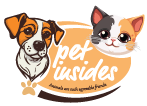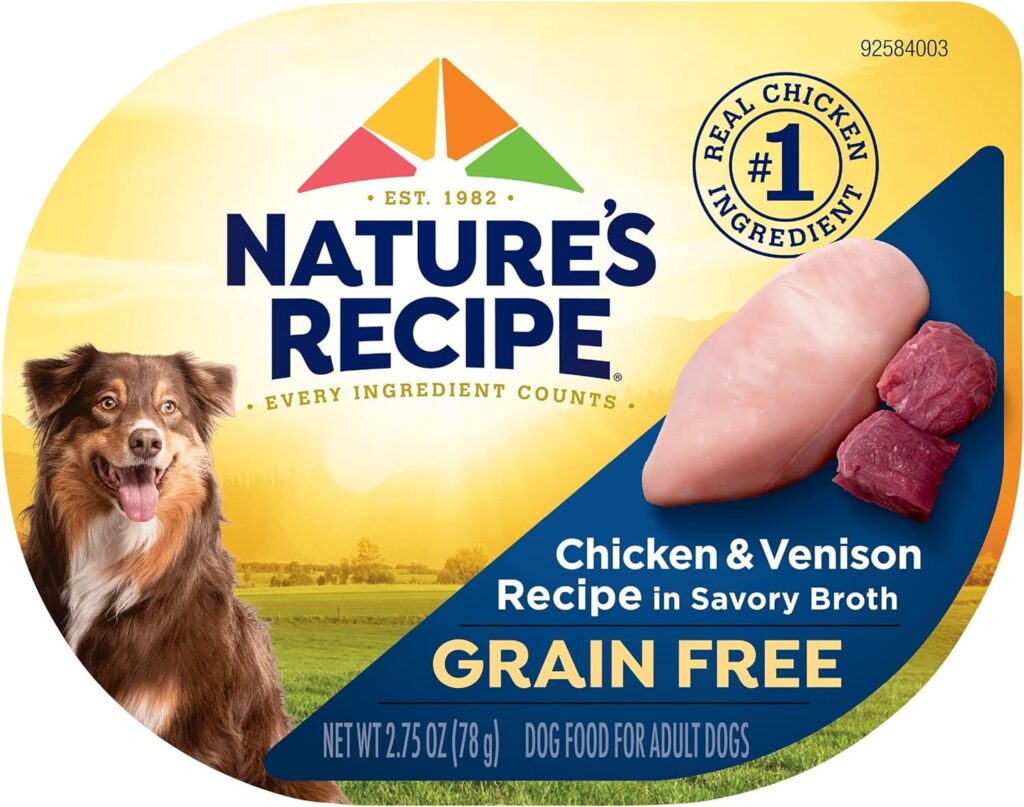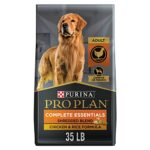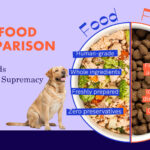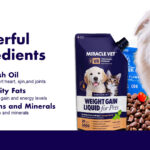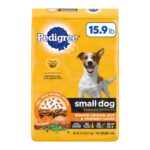Homemade wet food for dogs with allergies can be a nutritious alternative to commercial diets. It allows for control over ingredients to avoid allergens.
Preparing homemade wet food for your allergic dog can seem daunting, but it’s a proactive step towards ensuring their health and happiness. Allergies in dogs can manifest in various ways, from skin irritations to digestive issues, making it crucial to tailor their diet carefully.
By choosing to create a homemade meal, you can select hypoallergenic ingredients that are less likely to trigger your dog’s allergic reactions. This approach not only alleviates symptoms but also provides peace of mind knowing exactly what’s in your dog’s bowl. Crafting a balanced diet that meets all of your dog’s nutritional needs while avoiding allergens requires research and sometimes consultation with a veterinarian or a pet nutritionist. Embracing homemade dog food is a commitment to your pet’s well-being, ensuring they get a tasty, safe, and wholesome meal every time.
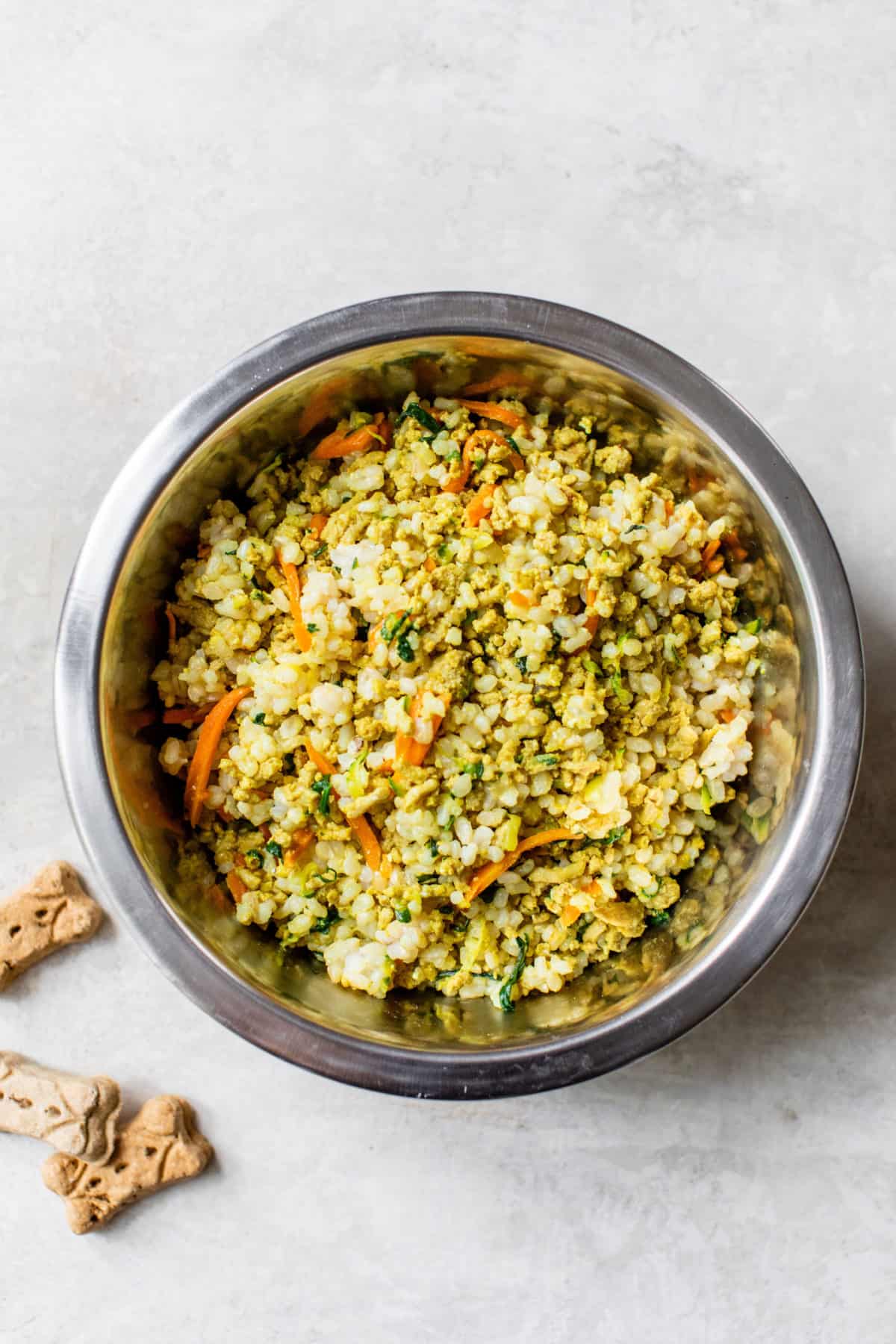
Credit: cleananddelicious.com
Introduction To Canine Allergies
Allergies in dogs are common and can cause discomfort. Much like humans, dogs can experience allergic reactions to their environment, food, and more. Understanding canine allergies is crucial for pet owners. A proper diet can help manage these allergies. Homemade wet food tailored for dogs with allergies can offer relief and nutrition.
Common Types Of Allergies In Dogs
- Flea Allergy Dermatitis: Reaction to flea bites.
- Atopic Dermatitis: Triggered by environmental allergens.
- Food Allergies: Caused by certain food ingredients.
- Contact Allergies: Due to direct contact with allergens.
Signs Your Dog May Have Allergies
Recognizing signs of allergies ensures timely care. Look for symptoms such as:
| Symptom | Description |
|---|---|
| Itchy Skin | Dog frequently scratches or licks. |
| Ear Infections | Repeated infections or head shaking. |
| Runny Eyes | Watery discharge from the eyes. |
| Sneezing | Regular sneezing not related to colds. |
| Vomiting | Sudden vomiting not due to illness. |
| Diarrhea | Loose stools without any clear cause. |
Benefits Of Homemade Dog Food
Discover the amazing advantages of crafting homemade dog food for your furry friends with allergies. Tailored meals not only cater to their unique dietary needs but also pack a punch of freshness and nutrition.
Control Over Ingredients
Creating your dog’s meals lets you choose what goes in the bowl. You can avoid allergens and provide only high-quality proteins, fats, and carbohydrates. This control helps maintain your dog’s health and keeps allergies at bay.
- Select hypoallergenic components to reduce reactions.
- Exclude fillers and preservatives found in commercial foods.
- Adjust recipes to meet your dog’s specific nutritional needs.
Freshness And Nutrition
Homemade meals ensure your dog enjoys the freshest food possible. Fresh ingredients retain more nutrients than processed options, supporting your dog’s overall well-being.
| Ingredient | Benefit |
|---|---|
| Fresh meats | Rich in protein |
| Whole vegetables | Provide vitamins |
| Whole grains | Supply energy |
- Avoid nutrient loss from long shelf lives.
- Enhance taste without artificial flavors.
- Support digestive health with natural fibers.
Identifying Allergens
Identifying allergens in your dog’s diet is the first step to providing relief from food-related allergic reactions. Dogs, like humans, can have adverse reactions to certain ingredients in their food. Understanding which ingredients are causing issues allows pet owners to tailor a homemade diet that suits their furry friend’s specific needs. Let’s explore common allergens and how to pinpoint them.
Common Food Allergens For Dogs
Dogs can be allergic to a variety of foods. The most common culprits include:
- Beef
- Dairy products
- Chicken
- Lamb
- Fish
- Corn
- Wheat
- Soy
Not all dogs will have issues with these ingredients. Each dog is unique.
Elimination Diet Basics
An elimination diet involves removing certain foods from your dog’s diet.
The steps are simple:
- Start with a diet that includes a single protein source and one carbohydrate.
- Feed your dog this simple diet for 8-10 weeks.
- Observe your dog for any signs of allergic reactions.
- If symptoms improve, reintroduce other foods one at a time.
- Monitor your dog for any changes with each new introduction.
This process helps identify specific allergens by process of elimination.
Preparing To Cook At Home
Many dog owners choose to make wet food at home, especially for dogs with allergies. Preparing your kitchen properly can make this process smoother and safer. Here’s how to set up your space and what tools you’ll need.
Setting Up Your Kitchen
Before you start cooking, ensure your kitchen is clean. Remove any items that aren’t necessary. This keeps your space tidy and safe. A well-organized kitchen helps you avoid cross-contamination, which is crucial for dogs with allergies.
- Clean all surfaces with a safe disinfectant.
- Store non-essential items to create more room.
- Keep your ingredients for dog food separate from other food.
Essential Cooking Tools
Having the right tools can make cooking homemade dog food easier and more effective. Here’s a list of must-have items:
| Tool | Use |
|---|---|
| Measuring Cups and Spoons | For precise ingredient measurement |
| Blender or Food Processor | To puree fruits, vegetables, and meats |
| Large Mixing Bowl | For combining ingredients |
| Storage Containers | For storing food in portions |
| Non-Stick Skillet | For cooking proteins with less oil |
Remember to choose tools that are easy to clean and maintain. This keeps your dog’s food safe from bacteria and allergens.
Sourcing Ingredients
Creating homemade wet food for dogs with allergies begins with sourcing the right ingredients. It’s essential to choose foods that nourish and heal. The right selection can make a world of difference to a dog’s well-being. Let’s explore how to pick allergy-friendly ingredients and decide between organic and non-organic options.
Choosing Allergy-friendly Ingredients
Identifying what your dog is allergic to is the first step. Work with a vet to find safe alternatives. Focus on novel proteins and carbohydrates that your dog has not eaten before. Novel proteins can include meats like duck, venison, or kangaroo. Carbohydrates might be sweet potatoes or quinoa. Use these tips:
- Keep it simple: Start with a single protein and carb.
- Check labels: Ensure ingredient purity.
- Introduce slowly: Monitor your dog’s response.
Organic Vs. Non-organic
Deciding between organic and non-organic ingredients is crucial. Organic products are free from pesticides and chemicals. They often provide better nutrition. Here’s a quick comparison:
| Organic | Non-Organic |
|---|---|
| No synthetic pesticides | May contain pesticides |
| Non-GMO | Possible GMOs |
| Environmentally friendly | Less eco-friendly |
| Usually more expensive | More affordable |
Remember, the best choice depends on your dog’s needs and your budget. Organic ingredients can be ideal, but high-quality non-organic options are also available. Always prioritize safety and nutritional value for your dog’s health.
:max_bytes(150000):strip_icc()/Homemade-Dog-Food-with-Meat-and-Vegetables-2000-4cc9fe09054d4c6e8eade112facefe53.jpg)
Credit: www.allrecipes.com
Recipe 1: Hypoallergenic Chicken Stew
When dogs suffer from allergies, finding the right food is crucial. Homemade wet food can be a safe haven for these pups. The Hypoallergenic Chicken Stew is a go-to recipe that’s not only delicious but also gentle on the digestive system. Packed with nutritious ingredients, this stew ensures your furry friend gets all the essential nutrients without the allergens.
Ingredient List
- Boneless, skinless chicken breasts – A lean protein source
- Pumpkin – Great for digestion
- Carrots – Full of vitamins
- Green beans – Low calorie and fibrous
- Zucchini – Gentle on the stomach
- Water or low-sodium chicken broth – For hydration and flavor
- Olive oil – A healthy fat
Step-by-step Instructions
- Prepare the ingredients: Wash and chop the vegetables into bite-sized pieces. Cut the chicken into small chunks.
- Cook the chicken: In a large pot, heat a dash of olive oil. Add chicken pieces and cook until no longer pink.
- Add vegetables: Introduce carrots, green beans, and zucchini to the pot. Stir occasionally.
- Add liquid: Pour in enough water or low-sodium chicken broth to cover the ingredients.
- Simmer: Bring to a boil, then reduce heat. Let it simmer for about 20 minutes or until the veggies are tender.
- Add pumpkin: Stir in the pumpkin and continue to simmer for an additional 5 minutes.
- Cool down: Turn off the heat. Allow the stew to cool before serving.
- Store properly: Keep leftovers in the fridge for up to 5 days or freeze for longer storage.
With this simple hypoallergenic chicken stew, your dog can enjoy a tasty meal without the worry of allergies. Remember to introduce any new food slowly to your pet’s diet and consult with a vet if you’re unsure about food allergies or dietary needs.
Recipe 2: Easy Fish And Veggie Mash
Introducing Recipe 2: Easy Fish and Veggie Mash — a superb choice for dogs with allergies. This simple recipe combines nourishing fish with wholesome vegetables, making it not only easy to prepare but also packed with essential nutrients. Let’s dive into the ingredients and step-by-step instructions to whip up this delicious meal for your furry friend.
Ingredient List
- 2 cups cooked, boneless fish (such as salmon or cod)
- 1 cup chopped carrots
- 1 cup chopped zucchini
- 1 tablespoon olive oil
- 1/2 cup peas
- Water (as needed)
Step-by-step Instructions
- Cook the fish thoroughly and ensure all bones are removed.
- Steam the carrots and zucchini until they are soft.
- Add peas to the steaming vegetables in the last few minutes.
- Mash the vegetables together using a fork or blender for a smoother texture.
- Mix the mashed veggies with the cooked fish.
- Drizzle with olive oil and stir well.
- Add water if needed to reach the desired consistency.
- Allow to cool before serving to your dog.
This homemade recipe is not only easy to make but also helps manage your dog’s allergies by using simple, hypoallergenic ingredients.
Recipe 3: Beef And Sweet Potato Feast
If your furry friend suffers from allergies, finding the right diet can be a challenge. ‘Recipe 3: Beef and Sweet Potato Feast’ offers a delicious and allergen-friendly option. This recipe combines nutritious beef with wholesome sweet potatoes for a meal that’s not only satisfying but also gentle on sensitive tummies.
Ingredient List
- 2 cups of lean ground beef
- 1 large sweet potato
- 1/2 cup peas (fresh or frozen)
- 1/2 cup carrots, diced
- 1 tablespoon olive oil
- 1/4 cup water
Step-by-step Instructions
- Preheat oven to 375°F (190°C).
- Wash and peel the sweet potato. Cut into small cubes.
- Spread sweet potato cubes on a baking sheet. Drizzle with olive oil.
- Bake for 25 minutes until tender.
- While sweet potatoes bake, brown ground beef in a pan.
- Add water to beef. Simmer for 10 minutes.
- Steam carrots and peas until soft.
- Mix beef, sweet potatoes, carrots, and peas.
- Let the mixture cool. Serve to your happy dog!
Give your dog the joy of a meal made with love. This Beef and Sweet Potato Feast is not only tasty but also tailored for dogs with allergies.
Balancing The Diet
Creating homemade wet food for dogs with allergies requires a careful balance of nutrients. Dogs need a specific mix of proteins, fats, carbohydrates, vitamins, and minerals for optimal health. Tailoring a diet to an allergy-prone dog means removing common allergens while still providing complete nutrition.
Understanding Canine Nutritional Needs
Canines thrive on a diet that is rich in animal proteins and balanced with fats and carbohydrates. Essential fatty acids support skin health, especially in dogs with allergies. A homemade diet must meet these needs without triggering an allergic response.
- Animal proteins – should be lean and vary to prevent boredom.
- Fats – vital for energy, should come from quality sources.
- Carbohydrates – provide fiber and energy; choose hypoallergenic options.
- Vitamins and minerals – critical for immune system and overall health.
Supplements For Allergy-prone Dogs
Supplements can help bridge nutritional gaps in a homemade diet. They ensure dogs with allergies receive all the necessary nutrients.
| Supplement | Benefit |
|---|---|
| Omega-3 and Omega-6 | Supports skin and coat health |
| Probiotics | Helps with digestion and immunity |
| Antioxidants | Protects cells and boosts immune response |
| Mineral supplements | Ensures a balanced intake of minerals |
Choose supplements designed for dogs. Introduce them slowly to prevent stomach upset. Consult a vet to ensure the right mix for your dog’s specific needs.
Portion Control And Storage
When preparing homemade wet food for dogs with allergies, it’s essential to focus on both portion control and proper storage. These two aspects ensure that your furry friend gets the right nutrients without overfeeding, and the food remains fresh and safe to consume. Let’s explore how to manage portions and store your homemade dog food effectively.
Determining The Right Portions
Feeding your dog the correct amount of food is crucial for their health. To determine the right portion size, consider your dog’s weight, activity level, and any dietary restrictions due to allergies. Use these guidelines:
- Weight: Lighter dogs need less food than heavier ones.
- Activity: Active dogs may require more calories.
- Allergies: Some foods may be denser in calories.
Consult a vet to establish a personalized feeding plan.
Storing Homemade Wet Food
Proper storage is key to maintaining the quality of your homemade dog food. Follow these steps:
- Refrigerate: Store in airtight containers to keep fresh.
- Portion: Divide into daily servings for easy use.
- Freeze: Freeze extra portions to extend shelf life.
| Storage Location | Duration |
|---|---|
| Refrigerator | 3-5 days |
| Freezer | Up to 3 months |
Remember to label containers with dates and contents for easy identification.
Transitioning To Homemade Food
Transitioning to Homemade Food can be a beneficial change for dogs with allergies. It allows for full control over ingredients. This minimizes allergy triggers.
Introducing New Food Gradually
Start by mixing a small amount of homemade food with your dog’s current diet. Increase the homemade portion slowly over a week. This helps your dog’s digestive system adjust.
- Day 1-2: Serve 75% old food with 25% new food.
- Day 3-4: Mix 50% old food with 50% new food.
- Day 5-6: Blend 25% old food with 75% new food.
- Day 7: Offer 100% homemade food.
Monitoring Your Dog’s Reaction
Watch for signs of allergic reactions as you switch foods. Look for itching, digestive upset, or ear infections. Note any changes in your dog’s condition.
| Signs to Monitor | Action to Take |
|---|---|
| Skin redness | Consult a vet and adjust diet. |
| Increased scratching | Reevaluate food ingredients. |
| Upset stomach | Slow down the transition process. |
Dealing With Picky Eaters
Creating homemade wet food for dogs with allergies can be challenging, especially when your furry friend is a picky eater. It’s crucial to find the right balance between what’s healthy and what’s appealing to your dog. Patience and creativity are key to introducing new foods that will nourish your dog without triggering allergic reactions.
Encouraging Your Dog To Try New Foods
To entice your picky eater, consider these strategies:
- Experiment with textures: Some dogs prefer chunky stews while others enjoy smooth pâtés.
- Warm the food: Heating food can enhance its aroma and make it more appealing.
- Use positive reinforcement: Offer praise and petting when your dog tries a new food.
Mixing With Familiar Foods
Combine new and familiar foods to ease the transition:
| Familiar Food | New Food |
|---|---|
| Favorite kibble | Allergy-friendly wet food |
| Loved treats | Novel protein sources |
| Usual flavors | Safe vegetables |
Start with a small portion of new food mixed with the old. Gradually increase the new food portion. This method helps your dog adjust to the change.
When To Consult A Vet
Creating homemade wet food for dogs with allergies can be a caring way to nourish your pet. Yet, it’s vital to know when to seek expert guidance. A vet can help customize a diet that’s safe and beneficial for your dog’s unique needs.
Professional Dietary Advice
Dogs with allergies need special diets. Always consult a vet before changing your dog’s food. This ensures the diet contains all essential nutrients. Your vet might suggest hypoallergenic recipes or supplements.
Recognizing Adverse Reactions
Watch your dog closely after introducing new foods. Signs of a reaction include itching, red skin, or stomach upset. If you notice any of these signs, stop the new food and call your vet. They can help pinpoint the cause and adjust your dog’s diet.
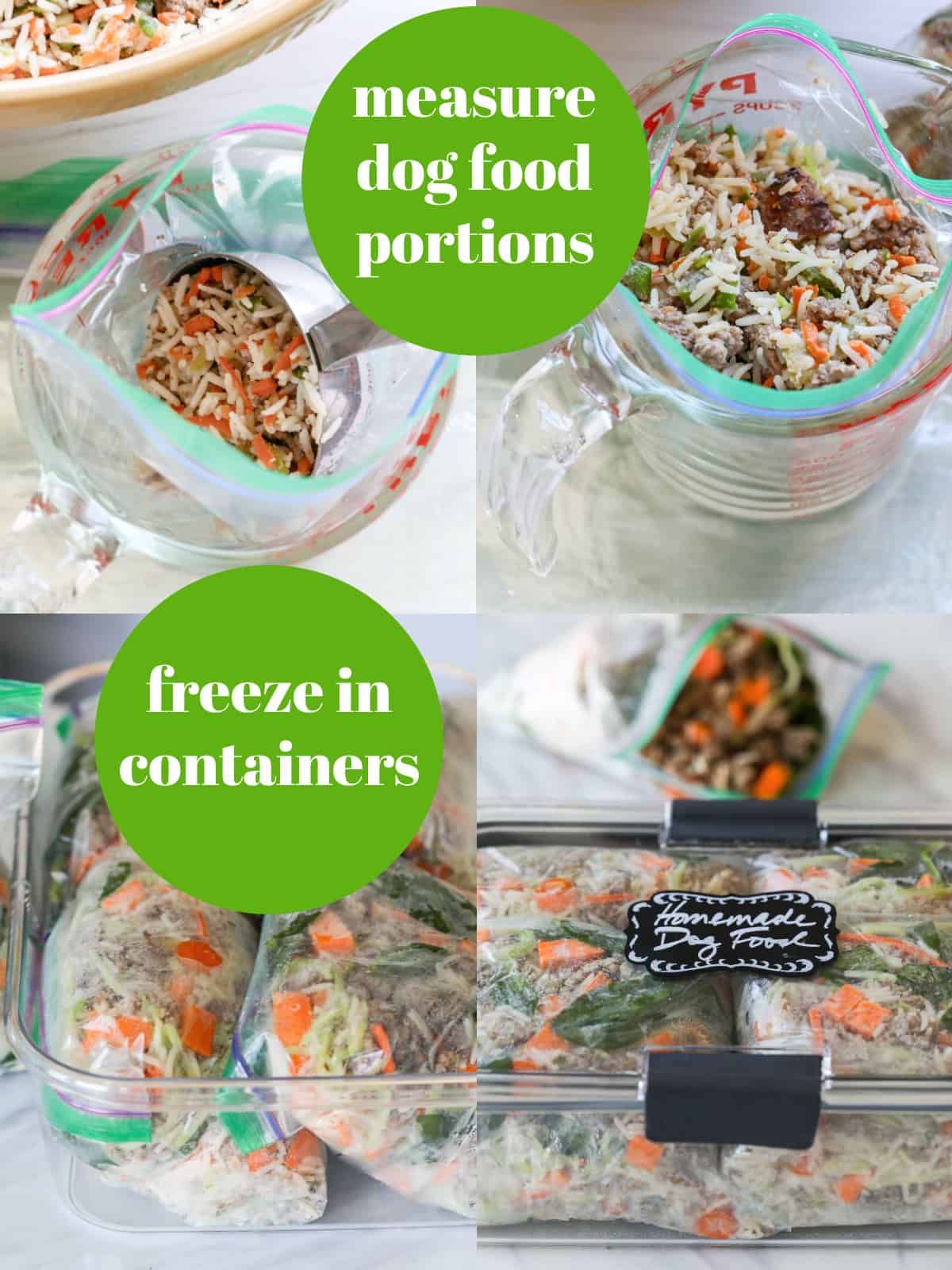
Credit: www.delicioustable.com
Homemade Vs. Commercial Allergy Diets
Choosing the right diet for dogs with allergies is crucial. Homemade vs. Commercial Allergy Diets offer different benefits and challenges. This section helps you understand both to make the best choice for your pet.
Pros And Cons
Both diet types have their advantages and drawbacks.
| Type | Pros | Cons |
|---|---|---|
| Homemade | Control over ingredientsNo preservativesAdjustable for specific allergies | Time-consumingNeeds precise nutritionCostly ingredients |
| Commercial | ConvenientNutritionally balancedExpert-formulated | Possible allergensPreservativesLess customizable |
Making An Informed Choice
Deciding on the right diet involves several steps:
- Identify your dog’s specific allergies.
- Consult with a vet.
- Consider your ability to prepare meals.
- Factor in your budget.
Always choose a diet that suits your dog’s health needs and your lifestyle.
Conclusion: Embracing The Homemade Approach
Making wet food for dogs with allergies at home offers control over ingredients. It ensures your furry friend gets a diet tailored to their needs. Discover the benefits and how to adapt recipes for your pet.
The Joys Of Cooking For Your Dog
Cooking for your dog is rewarding. You see their health improve with meals made with love. It’s a bond-strengthening activity. Your dog will enjoy the fresh, tasty dishes you create.
- Fresh ingredients mean better nutrition.
- Customized meals cater to your dog’s unique needs.
- Witnessing your dog’s joyful reactions is priceless.
Continued Learning And Adaptation
As you cook more, you learn what works best for your dog. You’ll adapt recipes to fit their health needs and taste preferences. Keep exploring new ingredients and consult with your vet for guidance.
| Step | Action |
|---|---|
| 1 | Start with simple recipes. |
| 2 | Use vet-approved ingredients. |
| 3 | Monitor your dog’s response. |
| 4 | Adjust as needed. |
Stay patient and attentive to your dog’s needs as you embrace homemade meals. Your efforts will lead to a healthier, happier pet.
Frequently Asked Questions
What To Put In Homemade Dog Food For Allergies?
Include hypoallergenic ingredients like novel proteins and easily digestible carbs. Opt for fish or duck and sweet potatoes. Avoid common allergens like beef, chicken, and wheat. Always consult a vet for tailored advice.
Is Homemade Food Better For Dogs With Allergies?
Homemade food can be better for dogs with allergies, as it allows for control over ingredients. Customizing meals avoids common allergens, supporting your dog’s health. Always consult a vet for tailored advice.
Is Wet Food Better For Dogs With Skin Allergies?
Wet food can be beneficial for dogs with skin allergies as it often contains higher moisture content and fewer preservatives, which may reduce allergic reactions. Always consult your vet for personalized advice.
What Can I Put In My Dog’s Food To Stop Itching?
Add omega-3 fatty acids or a spoonful of coconut oil to your dog’s food to alleviate itching. Always consult a vet before making dietary changes.
What Is Homemade Dog Food For Allergies?
Homemade dog food for allergies typically includes limited ingredients to minimize the risk of allergic reactions. It’s often made with hypoallergenic proteins and simple, easily digestible carbohydrates.
Conclusion
Crafting homemade wet food for your allergy-prone dog can be a rewarding endeavor. It allows you to cater to their specific dietary needs while ensuring they enjoy nutritious, tasty meals. Start experimenting with the recipes we discussed and see your furry friend thrive.
Remember, a healthy pet is a happy pet!
